{title}
{publish}
{head}
No one knows exactly when taro first took root in Tan Mai Commune, Phu Tho Province. However, for generations, local people have been cultivating taro as an inseparable part of their lives.
In recent years, recognizing its potential and economic value, the Tan Mai Commune People’s Committee has oriented the development of taro into a key local specialty product, focusing on brand building and establishing stable market linkages.
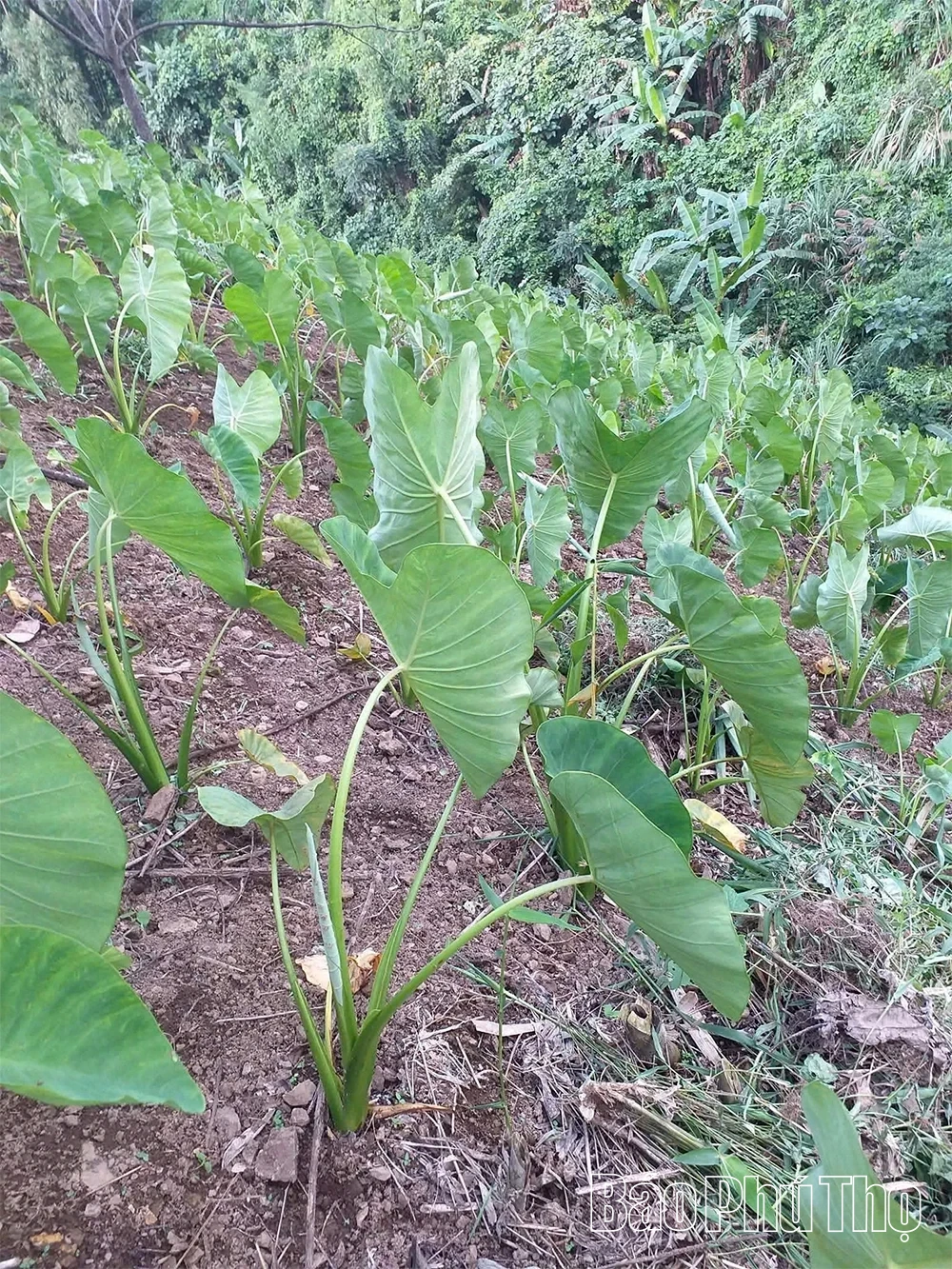
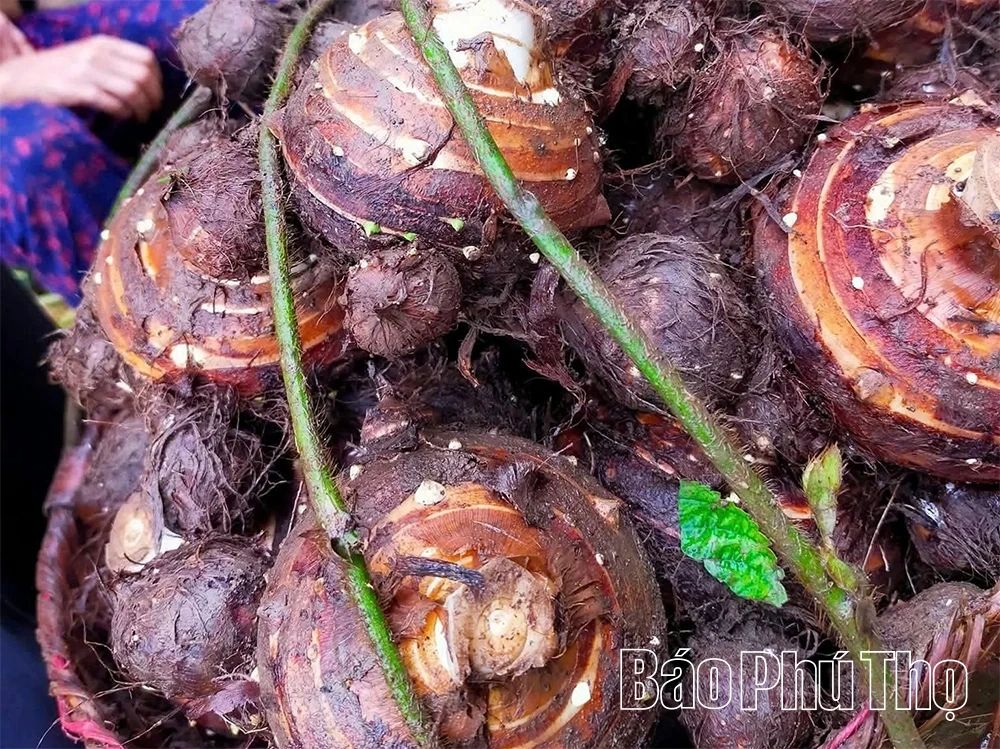
With its distinctive aroma, Phuc San taro has become a well-known specialty.
Phuc San taro is renowned for its fragrant flavor and high nutritional value. The local variety is typically planted from January to February (lunar calendar) and harvested in October–November, with an average yield of 6–7 tons per hectare.
Mr. Bui Ngoc Dai - Chairman of the Tan Mai Commune People’s Committee, shared: “Phuc San taro is a native crop. Once planted, it requires no fertilizers or pesticides. Farmers only need to weed periodically, and the seed tubers are self-selected after each harvest. This traditional cultivation method preserves the taro’s distinctive fragrance and soft, sticky texture—unlike any other variety. It can be said that Phuc San taro embodies the essence of both the land and sky, as well as the farming culture of the Thai and Muong ethnic people living around Hoa Binh Lake.”
Thanks to its naturally delicious taste, Phuc San taro has become increasingly popular. Local vendors now pre-process, peel, and vacuum-pack the taro in portions of 0.5–1 kilogram, distributing it to various provinces.
Ms. Ha Thi De - a resident of Chieng Sai neighborhood in Mai Chau, shared her secret to preparing soft, creamy taro dishes: “During taro season, I always buy Phuc San taro to make bone broth soup or steamed taro. After peeling, I soak it in salted water for about 10 minutes to remove the stickiness. Phuc San taro cooks very quickly—within just 10 minutes, you get a bowl of fragrant, sticky, creamy taro soup.”
Currently, Phuc San taro sells for VND 45,000–50,000 per kilogram for grade 1, and VND 30,000–35,000 per kilogram for grade 2. In 2020, the National Office of Intellectual Property granted the collective trademark certificate “Phuc San Taro” to 10 local households authorized to use it. The crop is now mainly cultivated in San Sop and Not hamlets, meeting food safety standards while ensuring high yield and quality.
Aiming for sustainable development, Tan Mai Commune is focusing on building the “Phuc San Taro” OCOP (One Commune, One Product) brand, while supporting local farmers to improve product quality, preservation, and post-harvest processing.
With proper investment and direction, Phuc San taro will not only remain a culinary delight reminiscent of the lake region but also become a valuable commercial product contributing to local economic growth.
Thanh Loan

baophutho.vn On the morning of November 28, the Phu Tho Province Human Resources Workshop enters a New Era and the 2025 Job Fair took place at Hung Vuong...

baophutho.vn On the afternoon of November 27, Mr. Nguyen Huy Ngoc – Provincial Party Committee Member , Vice Chairman of the Provincial People's Committee...

baophutho.vn Responding to the call of the Vietnam Fatherland Front Central Committee to support people in overcoming the consequences of natural disasters,...

baophutho.vn On the morning of November 12, in Vinh Phuc Ward, the former BNI Alpha Chapter of Vinh Phuc Province organized a business connection event.

baophutho.vn For generations, the Red River—its waters heavy with alluvial silt—has flowed tirelessly through the northern land, quietly nourishing fertile...

baophutho.vn On the morning of October 31, at the Hoa Binh Convention Center, the launching ceremony of the “Women-Led Climate-Resilient Water, Sanitation...

baophutho.vn On the afternoon of October 25, at Thong Nhat Stadium in Ho Chi Minh City, Xuan Thien Phu Tho FC recorded their first victory of the 2025 -...
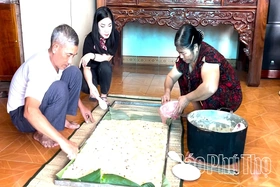
Ke Danh banh duc - a traditional Vietnamese steamed rice flour cake with peanuts and sesame also known as Dinh Xa village banh duc, Nguyet Duc commune, Phu Tho province. Ke...
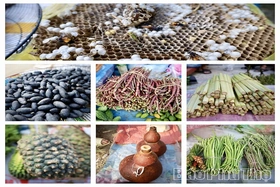
baophutho.vn Every rural area carries its own unique cultural traits that shape the distinct identity of its people. In Lai Dong Commune, that beauty is...
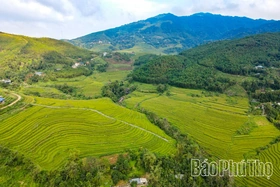
baophutho.vn Over two days (October 25–26), the 2025 Mien Doi Terraced Fields Festival will officially take place in Dom Bai Hamlet, Thuong Coc Commune, Phu...